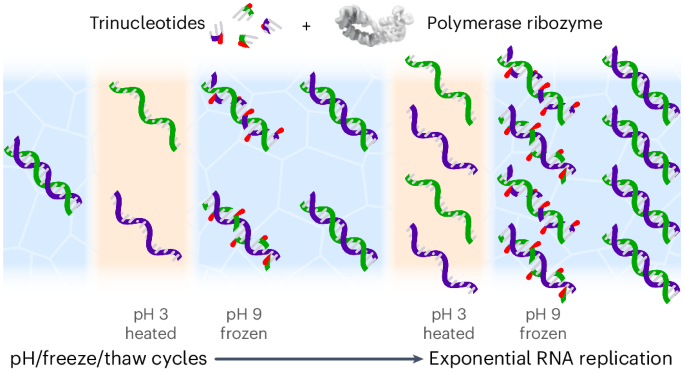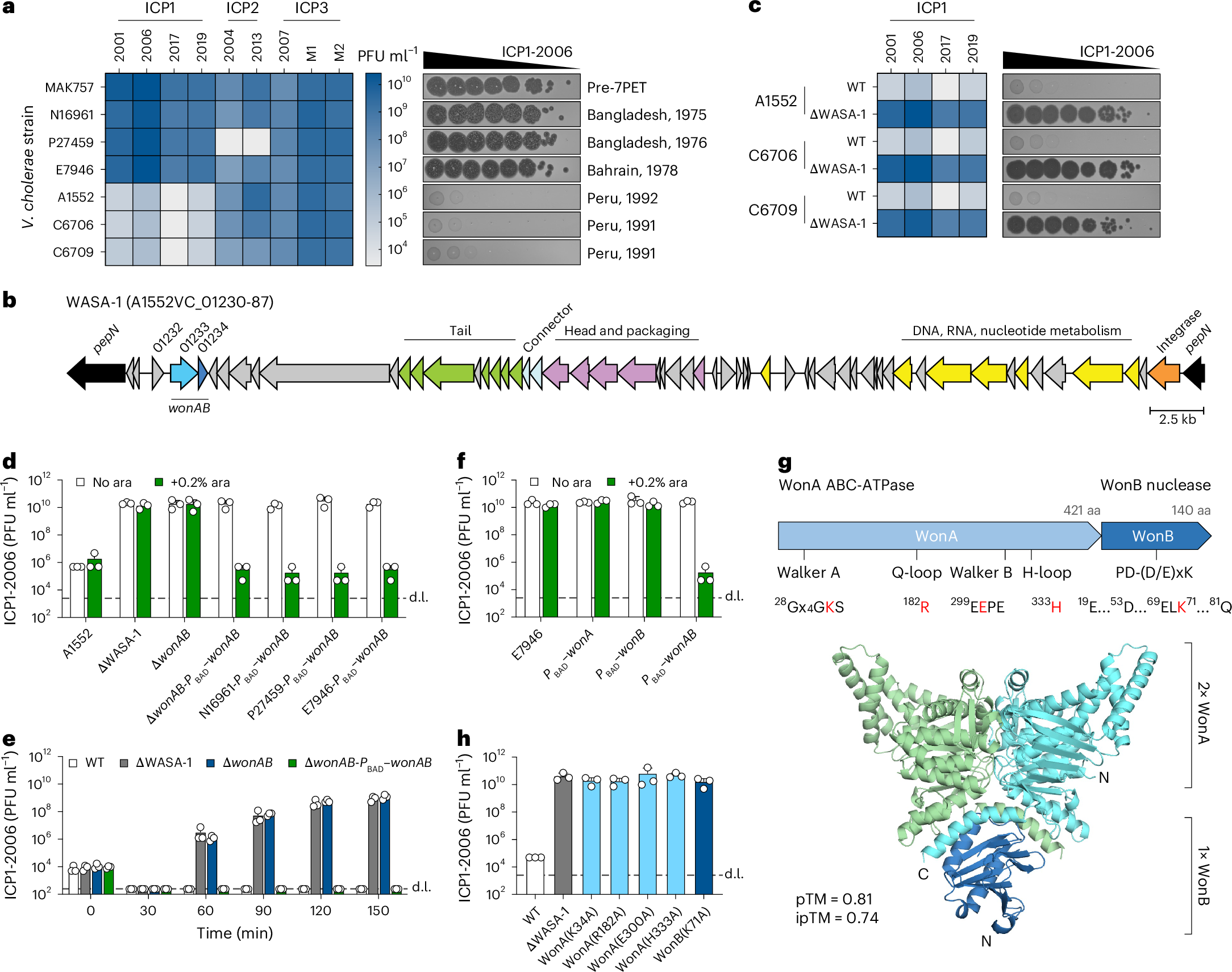2025-05-27 ユニバーシティ・カレッジ・ロンドン(UCL)
<関連情報>
- https://www.ucl.ac.uk/news/2025/may/chemists-recreate-how-rna-might-have-reproduced-first-time
- https://www.nature.com/articles/s41557-025-01830-y
pH-凍結-融解サイクル下におけるトリヌクレオチド基質がポリメラーゼ・リボザイムによるオープンエンド指数関数的RNA複製を可能にする Trinucleotide substrates under pH–freeze–thaw cycles enable open-ended exponential RNA replication by a polymerase ribozyme
James Attwater,Teresa L. Augustin,Joseph F. Curran,Samantha L. Y. Kwok,Luis Ohlendorf,Edoardo Gianni & Philipp Holliger
Nature Chemistry Published:28 May 2025
DOI:https://doi.org/10.1038/s41557-025-01830-y

Abstract
RNA replication is considered a key process in the origins of life. However, both enzymatic and non-enzymatic RNA replication cycles are impeded by the ‘strand separation problem’, a form of product inhibition arising from the extraordinary stability of RNA duplexes and their rapid reannealing kinetics. Here we show that RNA trinucleotide triphosphates can overcome this problem by binding to and kinetically trapping dissociated RNA strands in a single-stranded form, while simultaneously serving as substrates for replication by an RNA polymerase ribozyme. When combined with coupled pH and freeze–thaw cycles, this enabled exponential replication of both (+) and (-) strands of double-stranded RNAs, including a fragment of the ribozyme itself. Subjecting random RNA sequence pools to open-ended replication yielded either defined replicating RNA sequences or the gradual emergence of diverse sequence pools. The latter derived from partial ribozyme self-replication alongside generation of new RNA sequences, and their composition drifted towards hypothesized primordial codons. These results unlock broader opportunities to model primordial RNA replication.


